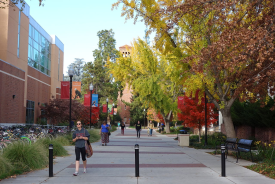A team of researchers at Indiana University School of Medicine successfully developed a method to grow inner ear tissue from human stem cells. This is expected to lead to new platforms to model disease and new therapies in treating hearing and balance disorders.
Eri Hashino, PhD, Ruth C. Holton Professor of Otolaryngology at IU School of Medicine, said that the inner ear is one of few organs that cannot be subjected to biopsy. With this, human inner ear tissues are rare for research purposes. The human inner ear organs they developed, which she described as "dish-grown" paves the way for more opportunities to create and test new therapies for several inner ear disorders.
The study, the Indiana University School of Medicine Newsroom reported, was published in the journal "Nature Biotechnology." It was led by Karl R. Koehler, PhD, assistant professor in the Department of Otolaryngology and Head and Neck Surgery at IU School of Medicine.
The technique that the researchers used is called three-dimensional culture. It is different from traditional cell culture in which cells grow in a flat layer on the surface of a culture dish.
This involves incubating stem cells in a floating ball-shaped aggregate. It also allows for more complex interactions between cells and creates an environment that simulates what occurs in the body during development.
The researchers were able to guide cells through key processes necessary in the development of the human inner ear because of the method they used. The result was inner ear "organoids," which are three-dimensional structures that contain sensory cells and supporting cells found in the inner ear.
Dr. Koehler noted that they developed their recipe for about a year. They discovered that they can make multiple inner ear organoids in each pea-sized cell aggregate.
The team used CRISPR gene editing technology to manipulate stem cells that produced fluorescently labeled inner ear sensory cells. These organoids had sensory cells that function similarly as cells that detect gravity and motion in the human inner ear.
© 2025 University Herald, All rights reserved. Do not reproduce without permission.








